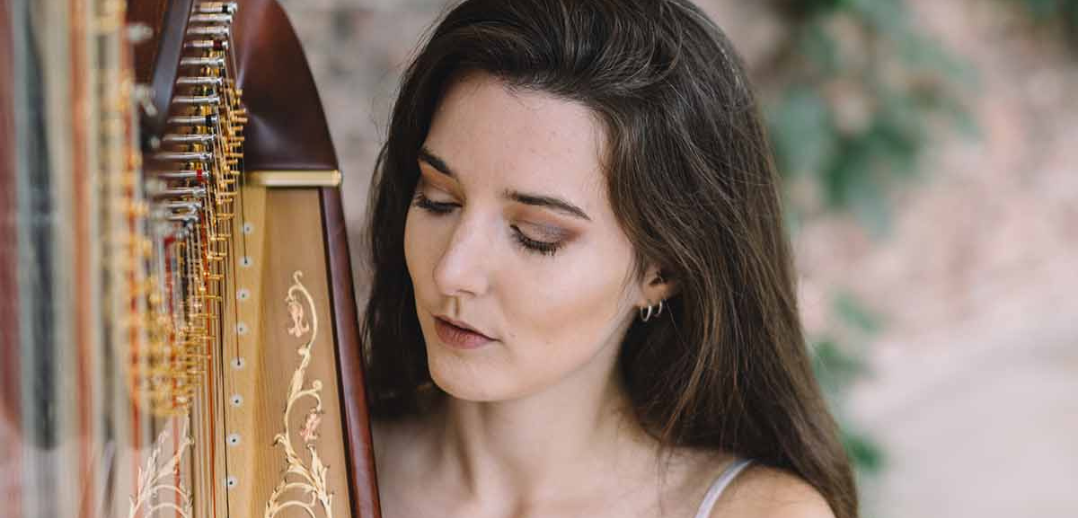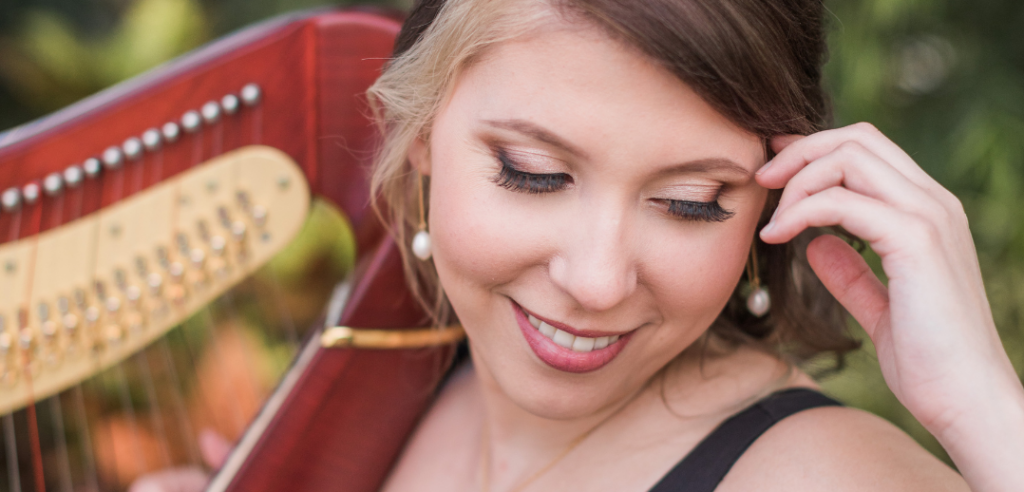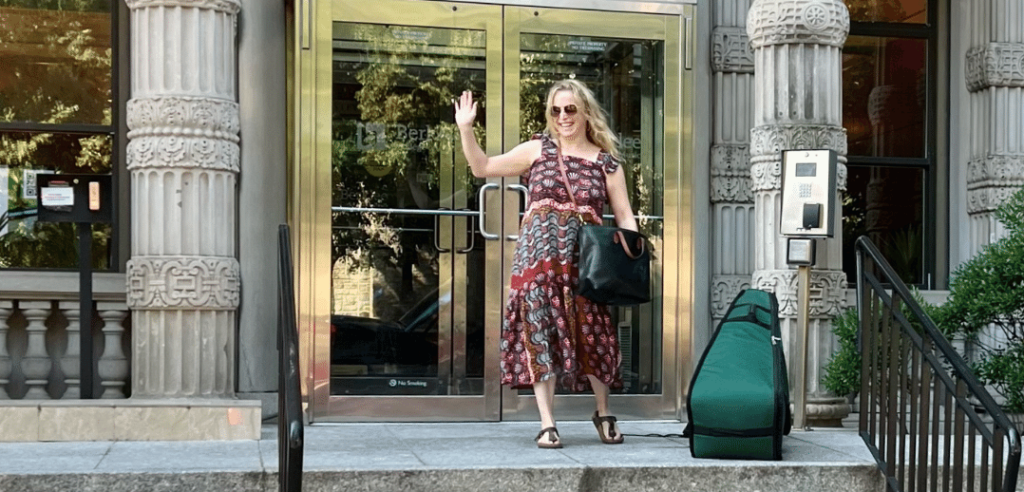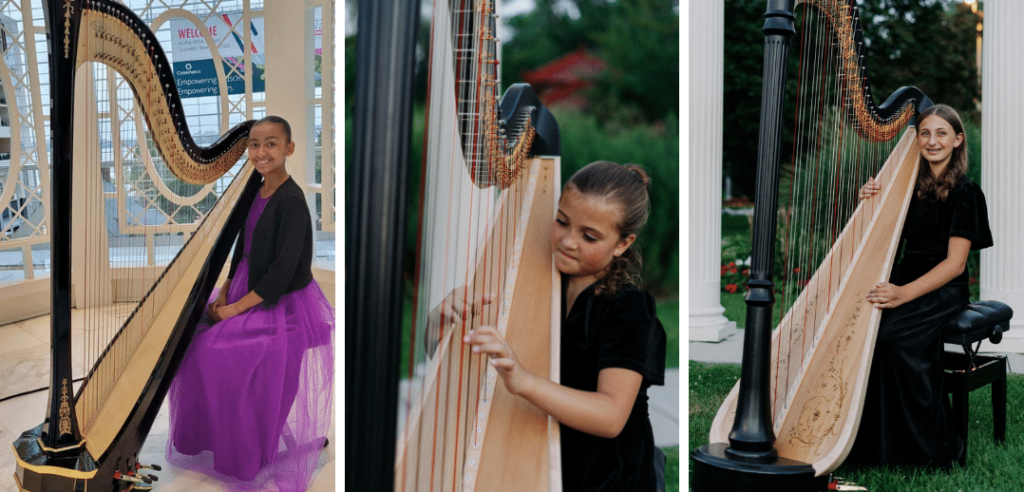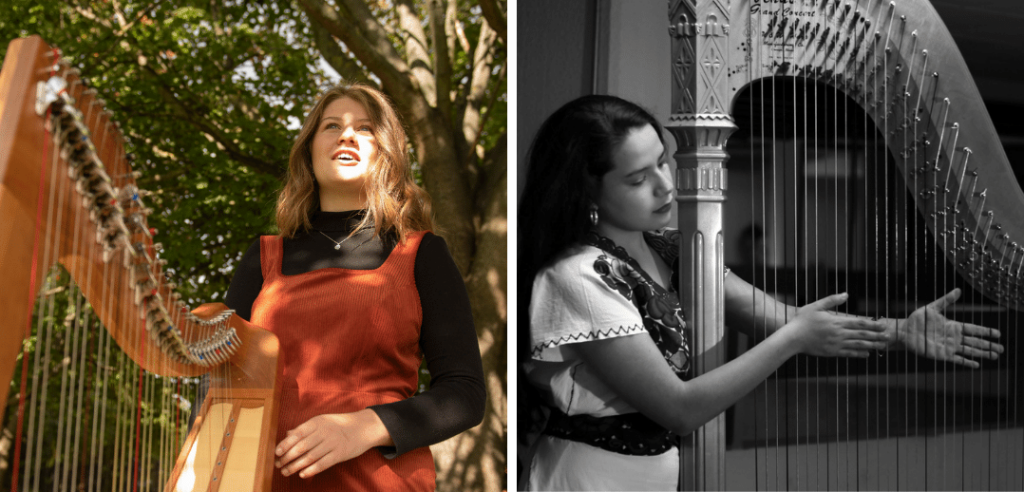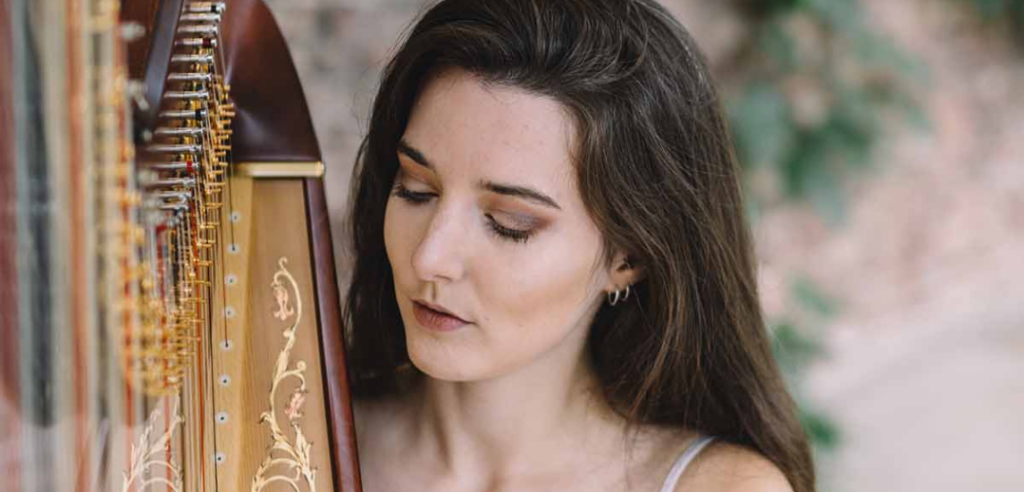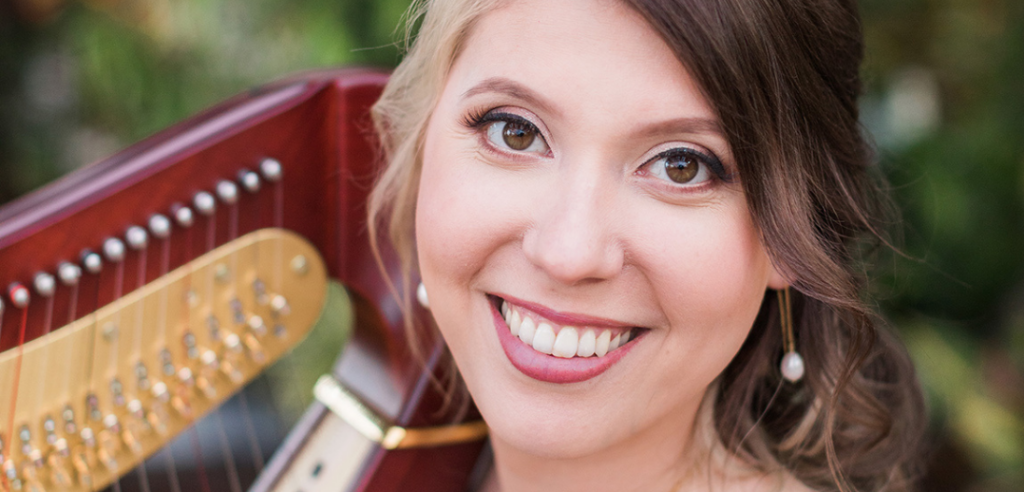We are kicking off the second year of our Practice Makes Harpist series where we follow harpists to see how their practice affects their musical experience. This year we will check in with the nine harpists we met in year one to see how their practicing has progressed over the last 12 months. In this installment, we’re meeting again with Stephanie Halsey as she embarks on her music career.
Stephanie Halsey
Age: 27
Education: Master of Music degree, University of Hull
Long-term goal: Continue developing portfolio career as a jazz musician, composer, and performer.
Short-term goal: Start incorporating Ableton production software in live performance.
In September 2021, Halsey finished her master’s degree, handing in an extensive journal about her jazz harp journey and submitting a complete album, which she composed herself and recorded with four musicians.
The album isn’t available for purchase, as Halsey decided not to rush the release. “I go to a lot of conferences and learned it’s quite important to time a release. It’s not necessarily a good thing to put things out straight away. It’s better to sit on it, perform, and get more of an audience before releasing.”
Next steps
Since graduating, Halsey has set up her full-time freelance business, taking care to spread out her work over a variety of areas to have several sources of income. She is not putting all her eggs in one basket, so to speak. Between June and December of 2021, Halsey had seven concerts and an extensive number of weddings—56 in total—all while working part-time and completing her master’s, which she admits was a bit overwhelming.
Halsey has a lot of irons in the fire. She is training to become a workshop leader for Special Educational Needs and Disabilities (SEND) children ages 15–25. Her current group of students is working toward performing a piece. Halsey helps with composition and rhythm, while a poet aids with writing song lyrics. “It’s really lovely to see them develop each week,” she says. If everything progresses as planned, she’ll finish the training period and be a workshop leader next year.
Halsey also received a funding bid for a project developing improvisation performances for the public. The project will engage the general public in non-traditional performances over the next 10 months. She is planning on making it semi-improvised, taking inspiration from the people who come into the room where she’s playing. As part of the project, she will also lead workshops for a variety of local creative groups to introduce them to the harp, including a mental health service project with a recording studio and teaching students about composing for the harp.
She recently worked on a project called “Resonance,” which mixed music and sounds recorded locally. Inspired by this project, Halsey is learning how to use the music production program Ableton with a trigger pad to create soundscapes.
Connecting life and music
Halsey is open about her journey to maintain good mental health. For her, cognitive behavioral therapy (CBT) has produced good results. This year she says she is exploring having more freedom in her relationship to the harp. In the past, the harp and music served as an escape mechanism for her. While this was helpful in her youth, now Halsey wants to find new ways to express emotions with the harp.
Balance is always an issue for working musicians, and due to her high workload, Halsey says she wasn’t progressing in her jazz the way she wanted. Now she’s trying to refocus on original music and started taking drum lessons to help her musical vision. The lessons are proving useful. She’s learning to use her feet and hands independently. Her current goal: have four rhythms going at once.
“Obviously, there are things we can do in terms of skill, like having drum lessons and getting better at rhythm or exploring harmony,” Halsey says. “But actually, a lot of it is about your state of mind and where you are when you approach the instrument.” She finds she likes to be in control of life and playing. When working on jazz improv, she’s learning to work from a flow-state, or becoming fully immersed in practice.
Shifting opinions
The careful planning system for practice she developed as a student (see our first installment with Halsey in the September/October 2021 issue of Harp Column) still serves her well. This year there is one change to her practice regimen. “I include yoga and meditation as an integral part of my practice now. If I don’t do them, I don’t develop,” she says.
Halsey recalls how she has struggled with nerves for the past few years. In February, before starting her meditation and yoga practice, she had her first live performance of original songs at an open mic night. “I was really nervous. I found it quite difficult and I didn’t really enjoy it. And then a couple of months later, I did a half an hour set for one of my friend’s bands. I’d been meditating daily and done lots of physical practice with a microphone, which partially blocks the strings. When I got up, I played and I totally enjoyed it. I hadn’t had that experience for a very, very long time.” Halsey’s bandmates noticed a difference in how she used to perform with them and how she’s performing now. It’s all been a matter of practice.
All of us change some opinions as our knowledge on a subject grows. Halsey has found this true in her relationship to jazz. “My understanding of jazz has developed. I’m embracing more of a modern understanding of jazz, beyond standards. I’m more interested in exploring the music and connecting with people. To do this, I like using innovation and technology.” She notes that her definition of jazz is a bit more open than others’ views.
As for what is ahead, Halsey says her work and direction are largely driven by the opportunities that come up and who she’s working with. Stay tuned for how her practice evolves in the coming year. •






